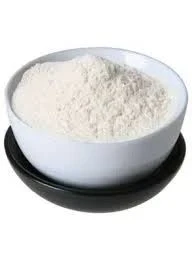
Nov . 12, 2024 14:39 Back to list
hydroxyethyl cellulose thickener
Understanding Hydroxyethyl Cellulose Thickener
Hydroxyethyl cellulose (HEC) is a water-soluble polymer derived from cellulose, a natural polymer that forms the structural component of plant cell walls. As a thickening agent, HEC is widely used across various industries, including food, cosmetics, pharmaceuticals, and construction, due to its versatility and effectiveness.
Composition and Properties
HEC is created by reacting cellulose with ethylene oxide, which introduces hydroxyethyl groups onto the cellulose chain. This modification enhances the solubility of cellulose in water and allows the resulting polymer to thicken solutions without affecting their clarity. HEC is non-toxic, biodegradable, and generally regarded as safe (GRAS), which makes it an ideal choice for applications in food and personal care products.
The thickening ability of HEC is influenced by factors such as concentration, molecular weight, and the pH of the solution. HEC is available in various grades, which differ in viscosity and solubility, allowing manufacturers to select the most suitable form for their specific needs.
Applications of Hydroxyethyl Cellulose
1. Food Industry In food products, HEC serves as a thickening agent, stabilizer, and emulsifier. It is commonly used in sauces, dressings, and dairy products to improve texture and mouthfeel. HEC can help prevent the separation of ingredients, ensuring a uniform product with a smooth consistency.
hydroxyethyl cellulose thickener

2. Cosmetics and Personal Care HEC is prevalent in cosmetic formulations, such as lotions, creams, and gels. It not only thickens products but also enhances their spreadability and stability. HEC helps to retain moisture, making it a valuable ingredient in skincare formulations aimed at hydration.
3. Pharmaceuticals In the pharmaceutical industry, HEC is used to formulate gels, ointments, and controlled-release drug delivery systems. Its ability to retain water and form a gel-like consistency makes it an effective medium for delivering active ingredients in a sustained manner.
4. Construction In construction, HEC is utilized in cement-based products and paints. It acts as a water-retaining agent and improves the workability of these materials, allowing for better adhesion and reduced cracking.
Environmental Considerations
With growing awareness surrounding eco-friendly practices, HEC stands out as a sustainable choice. Derived from renewable resources, it is biodegradable and does not pose significant environmental risks. The use of HEC can contribute to greener formulations in various products, fulfilling both consumer demand and regulatory standards for environmentally-friendly practices.
Conclusion
Hydroxyethyl cellulose thickener is a versatile and effective ingredient used across multiple industries. Its unique properties, such as solubility, non-toxicity, and biodegradable nature, render it an advantageous choice for formulators seeking to improve the texture and stability of their products. As industries continue to innovate and emphasize sustainability, HEC remains a key player in the development of high-quality products that meet consumer needs while being kind to the planet. Whether in food, cosmetics, pharmaceuticals, or construction, hydroxyethyl cellulose serves as an essential thickening agent that enhances formulation performance and consumer satisfaction. Understanding its properties and applications allows industries to leverage this polymer effectively, driving progress in product development and environmental responsibility.
-
Versatile Hpmc Uses in Different Industries
NewsJun.19,2025
-
Redispersible Powder's Role in Enhancing Durability of Construction Products
NewsJun.19,2025
-
Hydroxyethyl Cellulose Applications Driving Green Industrial Processes
NewsJun.19,2025
-
Exploring Different Redispersible Polymer Powder
NewsJun.19,2025
-
Choosing the Right Mortar Bonding Agent
NewsJun.19,2025
-
Applications and Significance of China Hpmc in Modern Industries
NewsJun.19,2025







